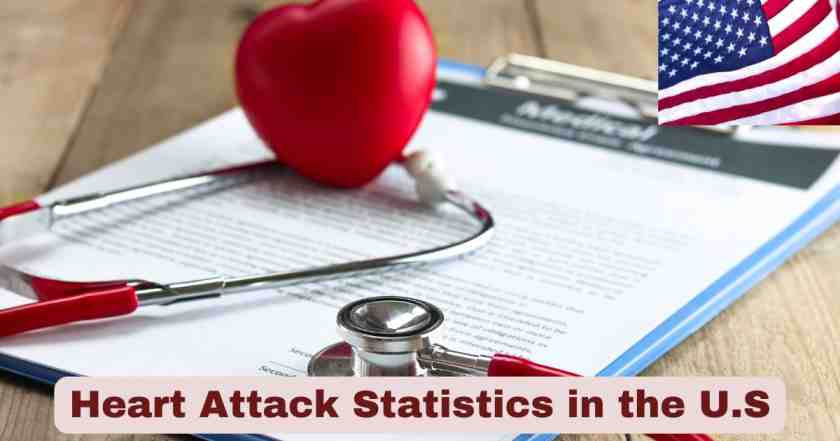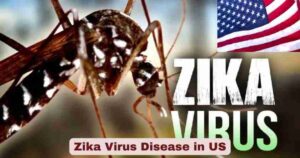Heart Attack in the U.S. in 2025
Heart attacks continue to devastate American communities, striking with alarming frequency and devastating consequences. The cardiovascular emergency that occurs when blood flow to the heart muscle becomes blocked affects hundreds of thousands of Americans each year, making it one of the most pressing public health challenges facing the nation. Understanding the current landscape of heart attack statistics becomes essential for healthcare professionals, policymakers, and individuals seeking to protect themselves and their loved ones from this life-threatening condition.
The scope of heart attack impact extends far beyond individual health outcomes, creating ripple effects throughout families, communities, and the entire healthcare system. With medical costs skyrocketing and productivity losses mounting, heart attacks represent not just a personal health crisis but an economic burden that affects every American. The latest government data reveals patterns and trends that demand immediate attention and coordinated response from all sectors of society working together to combat this preventable yet persistent threat to American health and wellbeing.
Heart Attack Facts in the U.S. 2025
| Heart Attack Fact Category | Statistic | Source |
|---|---|---|
| Frequency | Every 40 seconds someone has a heart attack | CDC 2025 |
| Annual Incidence | 805,000 heart attacks per year | CDC 2025 |
| First-Time Attacks | 605,000 are first heart attacks | CDC 2025 |
| Repeat Attacks | 200,000 are recurrent heart attacks | CDC 2025 |
| Silent Heart Attacks | 1 in 5 heart attacks are silent | CDC 2025 |
| Overall Heart Disease Deaths | 702,880 deaths in 2022 | CDC 2025 |
| Death Rate | 210.9 deaths per 100,000 population | CDC 2025 |
| Frequency of Death | Every 33 seconds someone dies from cardiovascular disease | CDC 2025 |
| Economic Cost | $252.2 billion annually (2019-2020) | CDC 2025 |
| Coronary Artery Disease Prevalence | 1 in 20 adults have CAD | CDC 2025 |
The heart attack statistics presented in this comprehensive data table reveal the staggering impact of cardiovascular emergencies on American society. The frequency of heart attacks occurring every 40 seconds demonstrates the urgent and continuous nature of this health crisis, affecting families and communities across all demographic groups. These numbers represent real people experiencing life-threatening medical emergencies that require immediate intervention and long-term lifestyle changes to prevent future occurrences.
The distinction between first-time heart attacks (605,000) and recurrent attacks (200,000) highlights two critical aspects of heart attack prevention and management. The substantial number of first-time attacks underscores the importance of primary prevention strategies targeting risk factors before cardiovascular damage occurs. Meanwhile, the significant number of repeat attacks emphasizes the ongoing vulnerability of heart attack survivors and the need for comprehensive secondary prevention programs that address lifestyle modifications, medication adherence, and regular medical monitoring to reduce future cardiovascular events.
Heart Attack Mortality Rates in the U.S. 2025
| Mortality Category | Statistic | Details |
|---|---|---|
| Total Heart Disease Deaths | 702,880 | Leading cause of death nationwide |
| Death Rate per 100,000 | 210.9 | Population-adjusted mortality rate |
| Proportion of All Deaths | 1 in 5 | Heart disease represents 20% of all deaths |
| Cardiovascular Death Frequency | Every 33 seconds | Continuous cardiovascular mortality |
| Coronary Heart Disease Deaths | 371,506 | Most common type of heart disease death |
| Young Adult Deaths | 1 in 5 CVD deaths | Adults under 65 years old |
Heart attack mortality statistics reveal the devastating impact of cardiovascular disease as the leading killer of Americans across all demographic groups. The 702,880 heart disease deaths recorded in 2022 represent not just numbers on a statistical report, but hundreds of thousands of families who lost loved ones to preventable cardiovascular events. The death rate of 210.9 per 100,000 population demonstrates that heart disease affects communities nationwide, regardless of geographic location or socioeconomic status, making it a truly national health emergency that demands coordinated response efforts.
The alarming frequency of cardiovascular deaths occurring every 33 seconds emphasizes the urgent and continuous nature of this health crisis affecting American families. Perhaps most concerning is the fact that 1 in 5 cardiovascular deaths occur among adults younger than 65 years old, highlighting that heart attacks and related cardiovascular events are not limited to elderly populations. This statistic underscores the importance of early prevention strategies, lifestyle modifications, and cardiovascular risk assessment programs targeting younger adults who may not perceive themselves as vulnerable to heart disease.
Heart Attack Demographics by Race and Ethnicity in the U.S. 2025
| Race/Ethnicity | Percentage of Deaths from Heart Disease | Ranking |
|---|---|---|
| Black (Non-Hispanic) | 22.6% | Highest risk group |
| Asian | 18.6% | Above national average |
| Native Hawaiian/Pacific Islander | 18.3% | Above national average |
| White (Non-Hispanic) | 18.0% | At national average |
| American Indian/Alaska Native | 15.5% | Below national average |
| Hispanic | 11.9% | Lowest percentage |
| National Average | 17.4% | Overall U.S. average |
The demographic breakdown of heart attack and heart disease mortality reveals significant disparities across racial and ethnic groups in the United States. Black (Non-Hispanic) Americans face the highest burden of heart disease mortality at 22.6%, representing a substantially elevated risk compared to other demographic groups. This disparity reflects complex interactions between socioeconomic factors, access to healthcare, environmental conditions, and genetic predispositions that contribute to cardiovascular disease development and outcomes within different communities.
The variation in heart disease mortality rates across demographic groups highlights the need for targeted prevention and intervention strategies that address the unique risk factors and barriers faced by different communities. Asian Americans and Native Hawaiian/Pacific Islander populations both experience above-average heart disease mortality rates at 18.6% and 18.3% respectively, while Hispanic Americans show the lowest percentage at 11.9%. These disparities underscore the importance of culturally competent healthcare approaches, community-based prevention programs, and policies that address social determinants of health to reduce cardiovascular disease burden across all American communities.
Heart Attack Healthcare Utilization in the U.S. 2025
| Healthcare Setting | Statistic | Details |
|---|---|---|
| Physician Office Visits | 13.0 million | Primary diagnosis of coronary atherosclerosis |
| Office Visit Percentage | 6.9% | Visits with CAD/heart attack history |
| Emergency Department Visits | 6.4% | ED visits with CAD/heart attack history |
| Adult CAD Prevalence | 4.8% | Adults diagnosed with coronary heart disease |
| CAD Population Affected | 1 in 20 adults | Ages 20 and older |
Healthcare utilization statistics demonstrate the substantial burden that heart attacks and coronary artery disease place on the American healthcare system. The 13.0 million physician office visits with coronary atherosclerosis as the primary diagnosis represent a significant portion of healthcare resources dedicated to managing cardiovascular disease complications. These visits reflect ongoing care needs for patients managing chronic heart conditions, medication adjustments, monitoring of risk factors, and preventive interventions designed to reduce future cardiovascular events.
The percentage of healthcare encounters involving patients with coronary artery disease or heart attack history reveals the pervasive nature of cardiovascular disease throughout the healthcare system. With 6.9% of physician office visits and 6.4% of emergency department visits involving patients with coronary artery disease or myocardial infarction history, healthcare providers across all specialties regularly encounter patients whose cardiovascular health requires ongoing attention and management. The 4.8% prevalence of diagnosed coronary heart disease among adults represents approximately 1 in 20 Americans aged 20 and older, highlighting the widespread impact of cardiovascular disease on the adult population and the need for comprehensive cardiovascular care infrastructure.
Young Adult Impact
Heart disease affects not only older adults but also younger populations. In 2022, approximately 1 out of every 5 deaths from cardiovascular diseases occurred among adults younger than 65 years old, highlighting that heart disease and heart attacks represent significant health risks across all adult age groups.
Heart Attack Preventable Risk Factors
The CDC identifies several key modifiable risk factors that contribute to heart attack risk. High blood pressure, high blood cholesterol, and smoking represent the primary controllable risk factors for heart disease. Additional medical conditions and lifestyle factors that increase heart attack risk include diabetes, obesity, poor diet, physical inactivity, and excessive alcohol consumption.
Conclusion
Heart attack statistics in the United States reveal a significant ongoing public health challenge. With a heart attack occurring every 40 seconds and heart disease claiming over 700,000 lives annually, cardiovascular disease represents the nation’s leading cause of death. The data underscores the importance of prevention efforts, early detection, and comprehensive treatment approaches to address this critical health issue.
Understanding these statistics helps inform public health policy, healthcare resource allocation, and individual risk assessment. The demographic variations in heart disease mortality rates highlight the need for targeted interventions and culturally appropriate prevention strategies across different population groups.
Disclaimer: The data research report we present here is based on information found from various sources. We are not liable for any financial loss, errors, or damages of any kind that may result from the use of the information herein. We acknowledge that though we try to report accurately, we cannot verify the absolute facts of everything that has been represented.







